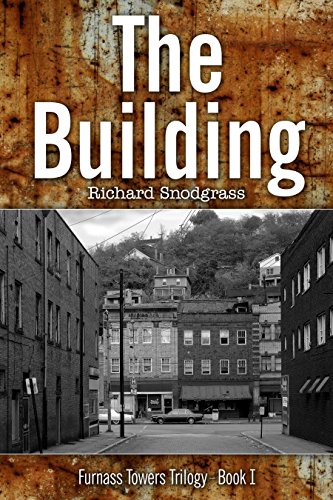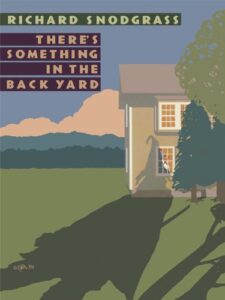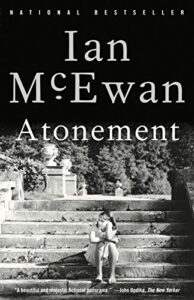
The Building received a 4+ star review, making it an IndieReader Approved title.
Following find an interview with author Richard Snodgrass.
What is the name of the book and when was it published?
The Building. Published April 22, 2018
What’s the book’s first line?
. . . it is the mid-1980s, in early spring, a time in southwestern Pennsylvania, the town of Furnass, that is barely distinguishable from late winter, just a hint of green on the otherwise bare trees and bushes with the first buds of the season, a dusting of green on the valley’s hills still too undefined to be considered anything more than a hope, a promise of warm days to come, but as yet the sunny days surprisingly and disappointingly chill, the possibility still of waking in the morning to find a covering of light snow or at the least frost, enough to make the sidewalks and bricked streets slippy as they say in this part of the country, the windows of the cars parked along the narrow streets needing scraped before the cars can be driven, though on this night, sometime in the darkness after midnight a breeze starts deep in the woods in the hills beyond the town, nothing you can see but is present nonetheless, persistent as desire, a stirring in a patch of gooseberry vines and fallen leaves that stops a deer dead in its tracks, freezes a groundhog in its burrow . . . but it is only a gust of air, and the deer flicks its tail and continues to pick its way between the dark trees, the groundhog continues to dig further into the hillside after waking from its hibernation and prepares for the coming summer . . . it is only the wind, little more than an added chill to the night air that sweeps along a dry creek bed and up a ravine, over some sandstone boulders to the top of the hill and along the ridgeline, being drawn by natural forces or its own momentum down the slope of the valley on the other side, cascading through the just-budding branches of the hickory and oak and maple trees and over the town at the base of the hills along the river . . . the gust of air plays among the narrow peaked roofs of the houses and whistles in the chimneys, dips down into the playground next to a grade school and rides the teeter-totter and gives a push to the swings before tumbling down the dark deserted streets under the streetlights, heading toward the abandoned mills and factories along the river now in the pre-dawn hours, then detours and climbs into the black open tower, the tall building under construction on the main street . . . it whisks through the stack of empty floors and swirls up the unfinished stairwell, setting a string of bare bulbs swinging, creates a small dust devil from a pile of debris and sawdust in a corner, rattles a stack of electrical conduit and sets a loose two-by-four clapping against a wood form, up across the top deck of the building high above the little town . . . it dances in and out among the rows of unfinished columns sticking up for the floors above, it tests the guy wires supporting the columns’ cages of reinforcing steel and sets them waving gently as if they were little more than clusters of tall grass . . . the gust of wind sings through the cages of steel, it curls around inside the hollow shafts, playing with itself, dallies there longer than it should and loses focus and becomes scattered and spends itself and dies there among the spirals and spacers and ties, and the construction site becomes still again . . . soon the black sky will lighten above the hills on the other side of the valley with the first hint of dawn, soon the workers will arrive on the empty floors of the building under construction and there will be different currents at play, different forces at work, but for now the construction site is quiet and the town is quiet, no one is about, nothing stirs, except . . . there, do you see it? . . . a solitary pickup truck is parked at the end of the wood fence that fronts the jobsite along the main street . . . a man sits at the wheel, the jobsite superintendent, drinking a cup of coffee, waiting, thinking about something . . .
[Author’s note: Honest, that’s the first sentence—and it was meant to be all one sentence to set the tone and pacing of the book….]
What’s the book about? Give us the “pitch”.
The Building, the first book of the Furnass Towers Trilogy, is the story of the well-intentioned but ill-conceived attempt to construct a high-rise building in the middle of a stricken mill town, and the effect the project has on the town and the men and women who work on it.
What inspired you to write the book? A particular person? An event?
I worked for close to a dozen years as a construction inspector on high-rise buildings in San Francisco and wanted to write a novel about the experience of building a building. But writing about a high-rise building of forty-some stories proved to be unwieldy. I had also wanted to write about the mill towns where I was born and raised, and realized a ten-story building in the middle of a small town was comparable in scale to a forty-story building in a major city. Thus, the building and the fictitious mill town of Furnass were born.
What’s the main reason someone should really read this book?
The Furnass Towers Trilogy is about many things—mill towns; small town life; construction; work mates, etc. But each book reflects one of the three main concerns that each individual faces in life: work, family, and friends. The underlying concern of The Building is our relationship to our work. We are in this life what we do, not what we say; and the most important thing that we do is our work. I don’t mean job or employment or what we do necessarily to earn a living. My definition here of work are the things we do, the actions we take, with awareness and intention; it may be just sitting under a tree watching the grass grow, but if it’s done with intention and awareness, it’s your work. And it’s by their work that you will know them. The work you do in this world and how you do it is a determinant and reflection of your character—and ultimately of your soul.
What’s the most distinctive thing about the main character? Who-real or fictional-would you say the character reminds you of?
The most distinctive thing about Jack Martin, one of the main characters of The Building (there are arguably several “main characters” in the book) is his relationship to his work, and that, in his mind, includes taking care of those around him. His tragedy is that in one instance he makes a mistake and it costs a life. Jack reminds me of any number of men I encountered in my years in construction—and with mill workers I knew growing up.
When did you first decide to become an author?
I decided to become an author during the year between high school and starting college when I got to know several families in the mill towns north of Pittsburgh and wanted to portray their way of life.
Is this the first book you’ve written?
No. My first novel, There’s Something in the Back Yard, was published by Viking Press in 1989. I’ve also published two books photographs and text: An Uncommon Field, The Flight 93 Temporary Memorial, Carnegie Mellon University Press, 2011; and, Kitchen Things: An Album of Vintage Kitchen Utensils, Skyhorse Publishing, 2013.
What do you do for work when you’re not writing?
For the past twenty-five years, I’ve earned my living as a writer, producer, and director in advertising and public relations, until 2007 with MARC USA, then with my own one-man, two-cat firm, Snodgrass Industries, Inc.
How much time do you generally spend on your writing?
Since college, I have maintained a three-four hours-a-day writing schedule. While working full-time in advertising/public relations, that has meant working in the middle of the night.
What’s the best and the hardest part of being an indie?
The best part of being an indie is that I have full control, which means sole responsibility, for all the phases of getting the book out in the world, from editing to proofing to design to marketing. The hardest part of being an indie is that I have full control, which means sole responsibility, for all the phases of getting the book out in the world, from editing to proofing to design to marketing.
Which writer, living or dead, do you most admire?
It depends on the day. There are the traditional ones, of course: Joyce, Faulkner. But I’m also greatly influenced by contemporary British authors: William Trevor, Pat Barker, Ian McEwan, Barry Unsworth, Sebastian Faulks, etc.
Which book do you wish you could have written?
The Dubliners, James Joyce; The Sound and the Fury, The Wild Palms, William Faulkner; Sometimes a Great Notion, Ken Kesey; Atonement, Ian McEwan; The Silence in the Garden, Fools of Fortune, William Trevor; The Rage of the Vulture, Stone Virgin, Barry Unsworth; A Week in December, Sebastian Faulks; Life Class, Toby’s Room, Noonday, Pat Barker….
.


